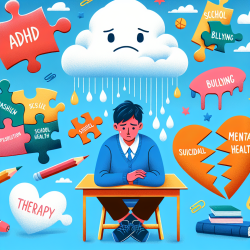As a speech-language pathologist, you are always seeking innovative and evidence-based methods to enhance the outcomes for children with Autism Spectrum Disorder (ASD). A recent study titled Effects of Aquatic Training in Children with Autism Spectrum Disorder provides compelling data on the benefits of aquatic training. This blog will delve into the findings and offer actionable insights for practitioners.
Key Findings from the Study
The study compared two aquatic training regimens—technical aquatic training (TAT) and game-based aquatic training (GAT)—over an 8-week period. The researchers assessed three primary areas:
- Gross Motor Skills
- Stereotypy Behavior
- Emotion Regulation
Gross Motor Skills
Both TAT and GAT significantly improved gross motor skills in children with ASD compared to a control group. The technical regimen focused on foundational swimming skills, while the game-based regimen included interactive and playful activities. Improvements were noted in:
- Locomotor skills such as sprinting, hopping, and jumping
- Object control skills like dribbling and catching
Stereotypy Behavior
There was a significant reduction in stereotypy behaviors across both experimental groups. The structured and engaging nature of the aquatic exercises provided a positive physical stimulus that contributed to this reduction.
Emotion Regulation
While the improvements in emotion regulation were less pronounced, there was still a noticeable enhancement in emotional self-awareness and empathy. The water environment’s calming effects likely played a role in these improvements.
Practical Implementation
Based on these findings, here are some practical steps you can take to incorporate aquatic training into your therapeutic practices:
- Start Small: Introduce short, fun aquatic sessions to familiarize children with the water environment.
- Focus on Individual Needs: Tailor the activities to each child's motor and emotional abilities.
- Engage in Play: Use game-based activities to make the sessions enjoyable and interactive.
- Monitor Progress: Regularly assess improvements in motor skills, stereotypy behaviors, and emotional regulation.
Encouraging Further Research
While the study provides valuable insights, it also highlights the need for further research. Longer training periods and larger sample sizes could yield more definitive results, especially in the area of emotion regulation. As practitioners, you can contribute to this growing body of knowledge by documenting and sharing your experiences with aquatic training.
To read the original research paper, please follow this link: Effects of Aquatic Training in Children with Autism Spectrum Disorder.










